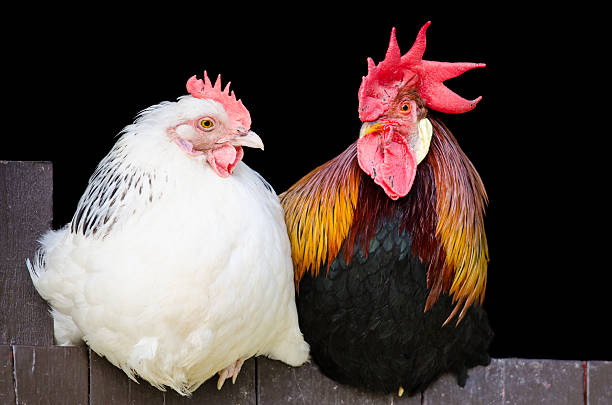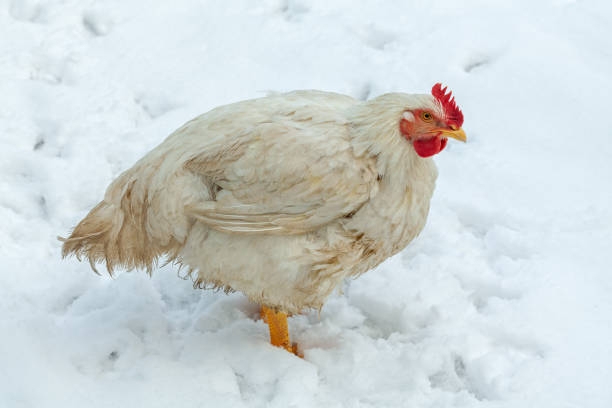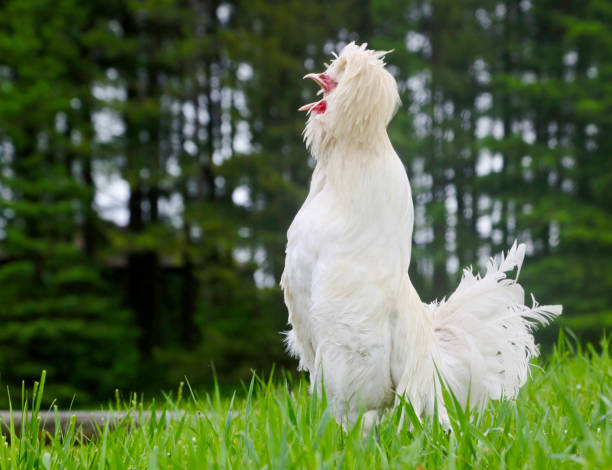Curious if that chick will grow up to be a crowing rooster or a laying hen? Knowing the differences between hens and roosters can be handy for backyard chicken keepers, especially if you’re raising chickens for the first time. In this guide, we’ll dive into the top physical and behavioral differences between hens and roosters, when you can spot these differences, and how to identify chicks. Plus, we’ll answer a common question: Can hens turn into roosters?
Let’s get into it!
Physical Characteristics of Hens vs. Roosters
One of the easiest ways to tell hens and roosters apart is by their physical characteristics. Here’s what to look for:
- Comb and Wattles: Roosters tend to have larger, more prominent combs and wattles compared to hens. A rooster’s comb is usually more vivid in color, too.
- Feathering: Roosters have pointier, shinier feathers, especially in the neck (hackles), back (saddle feathers), and tail. Hens have softer, rounded feathers.
- Tail Feathers: Roosters develop long, arched tail feathers, often called "sickle feathers," which are usually absent in hens.
- Spurs: As they mature, roosters grow sharp spurs on the backs of their legs, while hens generally have small or nonexistent spurs.
- Size and Build: Roosters are typically larger and more muscular than hens, with a broader stance and longer legs.
These physical traits become more noticeable as chickens mature, but some signs can appear sooner, depending on the breed.

Behavioral Characteristics of Hens vs. Roosters
Behavioral differences can also give clues about whether you’re looking at a hen or rooster. Here are some common behaviors to watch for:
- Crowing vs. Clucking: Roosters crow, especially in the morning, as part of their natural behavior. Hens typically cluck softly, especially when laying eggs.
- Protective Instincts: Roosters are natural protectors and tend to keep an eye out for potential threats to the flock. They may also try to corral the hens and lead them to food.
- Aggressiveness: Roosters can be more territorial and assertive, especially with other roosters, while hens are generally calmer.
- Mating Behavior: Roosters may display mating behaviors, such as dancing in circles or flapping their wings around hens, which are rarely seen in hens.
Watching for these behaviors as chicks grow can help you identify their sex, though some breeds may show behaviors more subtly.

When Can You Tell a Hen from a Rooster?
So, when exactly can you identify if a chick is a hen or a rooster? Here’s a rough timeline:
- Weeks 1–3: Most chicks look very similar at first. You may notice small differences in leg size, with roosters often having thicker legs, but it’s not a reliable indicator.
- Weeks 4–6: Small comb and wattle differences may start to show, with roosters’ combs growing a bit faster and pinker than hens’.
- Weeks 6–12: Roosters’ feathers (saddle, hackle, and tail) may begin to look shinier and more pointed. The difference becomes clearer in breeds with obvious color or feather pattern differences.
- Around 4–5 Months: By now, roosters should be crowing, and their tail feathers will be more prominent. At this age, hens may begin to lay eggs, solidifying their sex.
In some breeds, roosters and hens look very similar until they reach about 5–6 months, so patience is key.

Can Hens Turn Into Cockerels?
This might sound like a myth, but it’s actually a real phenomenon! While hens don’t exactly “turn into” roosters, there are rare cases where a hen takes on male characteristics. Here’s why:
Hens have a dormant ovary and a second, underdeveloped gonad that would develop into testes in a male. If a hen’s active ovary stops functioning (due to age or injury), the dormant gonad may develop, leading to male-like behaviors and even physical changes. These hens won’t fully become roosters, but they may crow, develop larger combs, and act more protectively, similar to a rooster.
How to Determine If Chicks are Male or Female
Determining the sex of chicks is known as “sexing,” and there are several methods used by breeders and hatcheries to identify males and females early on. Here are the most common ways:
- Vent Sexing: Vent sexing involves examining the chick’s genital area, but it’s a skill that requires training. Most backyard chicken keepers don’t use this method, as it’s tricky and stressful for the chicks.
- Feather Sexing: In some breeds, feather sexing can be used. Roosters and hens may develop feathers at slightly different rates. For example, male chicks may grow tail feathers later than female chicks.
- Color Sexing: Some chicken breeds are “sex-linked,” meaning males and females have different colors as chicks, making it easy to distinguish their sex at hatch.
- Behavioral Observations: Over the first few weeks, behavioral cues may help identify roosters, as they can be slightly more assertive or bold. However, this is not a foolproof method.
If you’re unsure about a chick’s sex, waiting until physical and behavioral differences become more apparent is often the best approach.

Fun Fact: Cockerels vs. Roosters and Pullets vs. Hens
You might have come across terms like “cockerel” and “pullet” when talking about chickens. Here’s a quick explanation:
- Cockerel: A young male chicken, typically under one year old. Once he matures, he’s referred to as a rooster.
- Pullet: A young female chicken, typically under one year old. When she reaches laying age, she’s called a hen.
Knowing these terms can be helpful if you’re raising young chickens and trying to identify their sex as they grow.
Why It Matters: Choosing Hens vs. Roosters for Your Flock
Whether you’re hoping for egg-layers, protectors, or a combination of both, it’s important to know the difference between hens and roosters. Hens are the egg producers and are generally more docile, while roosters play a vital role in flock protection. If you’re raising chickens for eggs, you’ll likely prefer hens. However, a well-behaved rooster can add value by protecting hens from predators.
If you’re unsure about raising roosters due to their behavior, it’s always a good idea to do research on chicken breeds known for having friendly roosters. Breeds like the Orpington or Australorp are known for their gentle roosters, which makes them popular in backyard flocks.
Conclusion
Distinguishing between hens and roosters can be a fun part of raising chickens, but it does take some observation and patience. From physical characteristics like comb size and feather shape to behavioral traits like crowing and protective instincts, these differences make it easier to spot a hen or rooster in your flock.
Whether you’re raising chicks or adding new birds to your coop, knowing the differences between hens and roosters can help you manage your flock and create a harmonious backyard setup. Enjoy the journey, and happy chicken-keeping!



Dejar un comentario
Todos los comentarios se revisan antes de su publicación.
Este sitio está protegido por hCaptcha y se aplican la Política de privacidad de hCaptcha y los Términos del servicio.